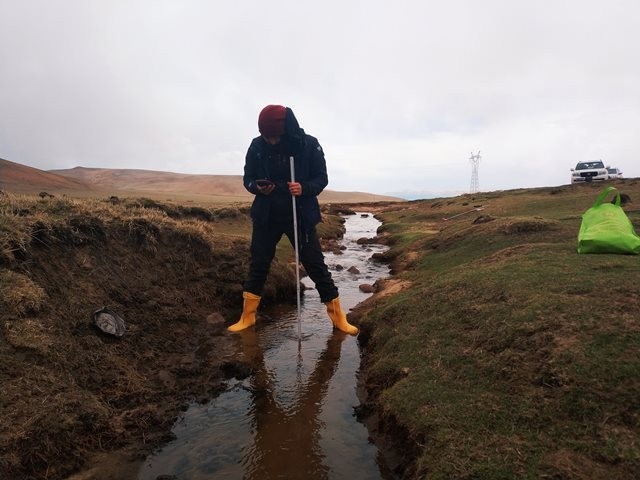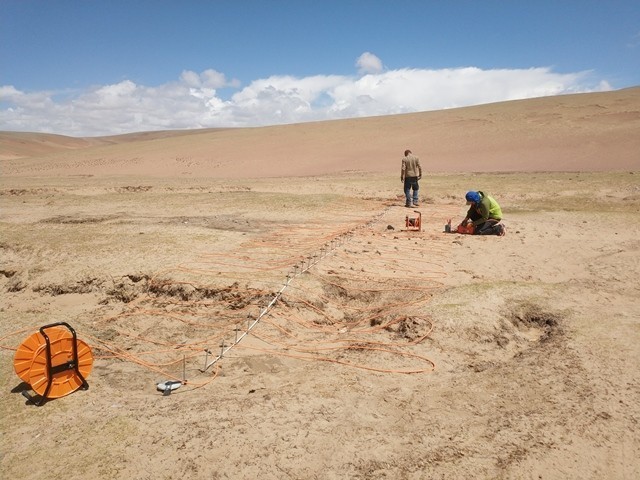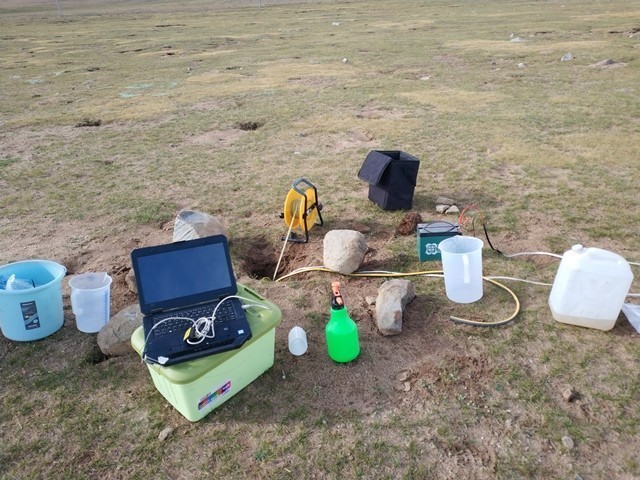Physical Analysis and Numerical Modeling of Flow Systems in the Nam Co catchment, Tibetan Plateau
M.Sc. Tuong Vi Tran, Prof. Dr. Thomas Graf and the TransTiP team
DFG funding 2309: International graduate school TransTiP (Geo-ecosystems in Transition on the Tibetan Plateau) (https://www.tu-braunschweig.de/irtg-transtip), Subproject: W1, 2018-2020
The Tibetan Plateau (TP) is of crucial importance for the hydrological, energy, and element cycles in Asia and represents one of the most sensitive geo-ecosystems on Earth. The TP is also called ‘‘the Third Pole’’ of the earth and ‘‘the Water Tower of Asia’’. The numerous inland lakes in the TP are important sources of water and indicators of regional climate change. Because of the harsh physical conditions (remoteness, high altitude, inclement weather, etc.) and lack of in situ observations, water levels, water storage as well as the water budget of lakes, are still poorly known.
The international graduate college “Geo-ecosystems in Transition on the Tibetan Plateau” (TransTiP), a Sino-German cooperation between Technische Universität Braunschweig (TUBS), Gottfried Wilhelm Leibniz Universität Hannover (LUH), Friedrich-Schiller-Universität Jena (FSUJ), Institute of Tibetan Plateau Research, Chinese Academy of Sciences Beijing (ITP-CAS) and Lanzhou University (LU), deals with the assessment of changes in sediment and carbon fluxes, water fluxes and water quality and how it will affect water resources, biodiversity as well as species composition and distribution in the future.
Due to influence of climate change and human activities, permafrost has been reduced extensively. Permafrost and seasonal freeze-thaw processes in the vadose and phreatic zones are closely related to groundwater dynamics, which leads to changing groundwater flow conditions. The two processes of permafrost and groundwater flow are a strongly coupled, non-linear system. Hence, the focus of this subproject will be to investigate details on the hydrogeological behavior within the Nam Co research area and the development of numerical models using OpenGeoSys (OGS) that simulates that coupled system. In addition, the Nam Co lake is the second largest salty lake in China. Due to climate change modifications in its basin characteristics occurred, therefore a detailed investigation on its behavior is necessary.






